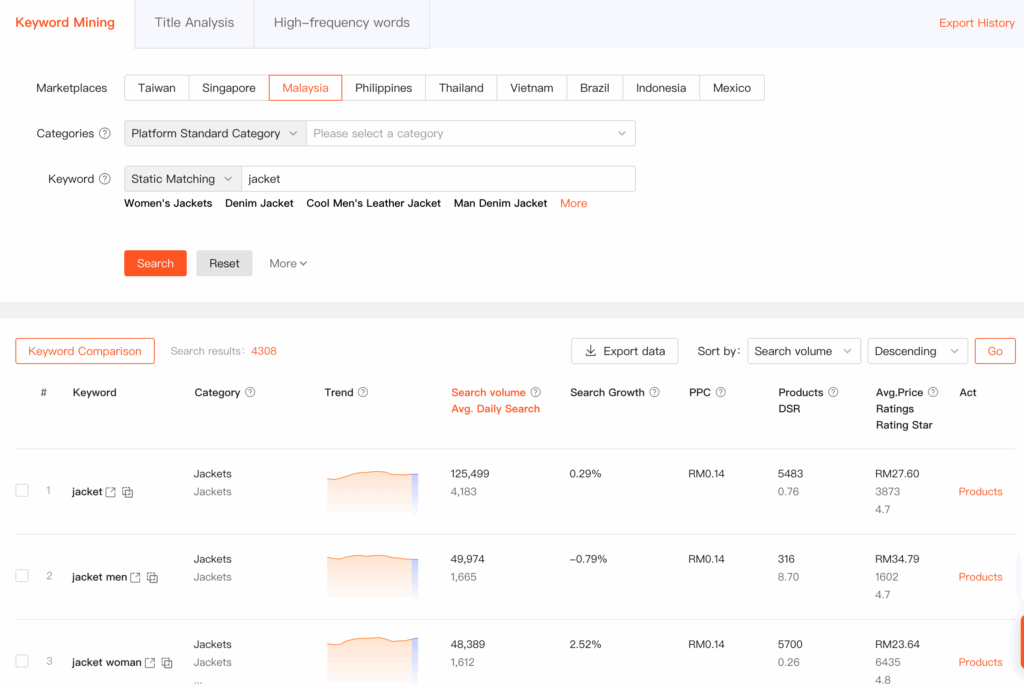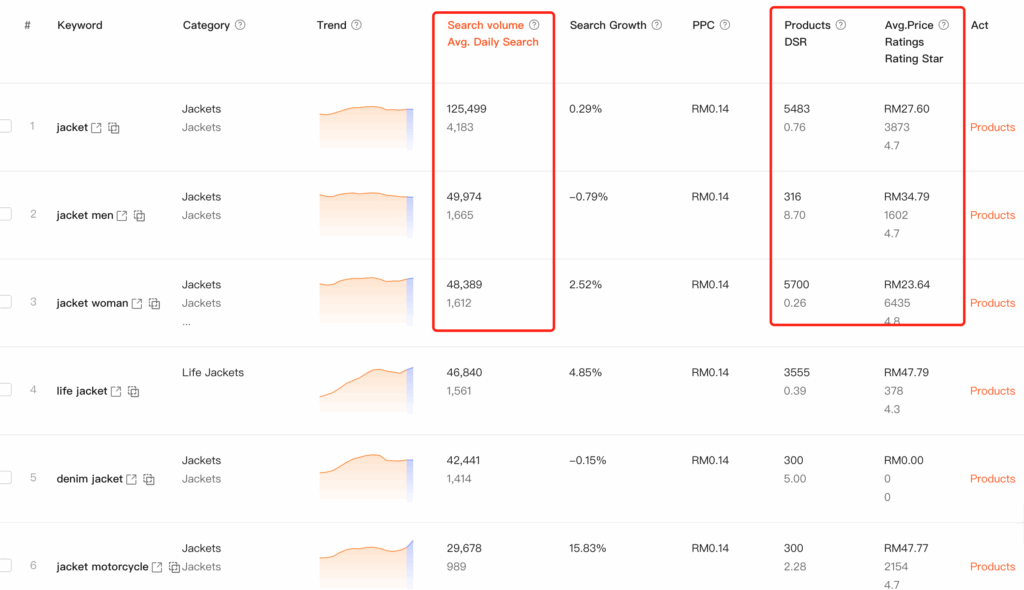Why conduct keyword mining?
A good keyword library is key to building product traffic, when making a new listing or optimizing on advertising down the line. Everything revolves around keywords. Thus, the keyword library of a product can be considered as the blood of each operational process of Shopee.
Shopdora’s keyword mining function find products under a keyword, mining keywords for these products, from 1 to 10, 10 to 100, 100 to 1000…, eventually forming a huge keyword library related to the search keyword, to add more product keyword search entrance, to seize more keywords.
When to conduct keyword mining?
- 1. When listing products: helps you find better keywords so products are easier to be searched
For example, if you sell phone cases, the system will suggest shockproof phone cases, cartoon phone cases, etc. - 2. When advertising: helps you choose the most cost-effective ad keywords-
Tells you which keywords are cheap to click and have good results - 3. When selecting new products: observe market trends-
For example, if the search volume for eco-friendly water bottles surges, it might be a good business opportunity
How to conduct keyword mining?
- Check the trending keywords of different sites
Select “Keyword” on the toolbar, click “Keyword Mining,” and enter the interface as shown.
Select the ‘site’ for the country you want to research, such as ‘Taiwan.’ This will allow you to query the search data of all keywords from that site.

- Search for trending keywords in specific categories
Select the corresponding site and category
Method 1: If you know the category and product name you’re working on, you can skip filling out keywords and directly select the category to find popular keywords in that category.
Click on “Best-selling Products” at the right side to display the list of best-selling products corresponding to the keyword, and click the product link to directly jump to Shopee.
Method 2: If you already have specific keywords you wish to use and analyze their data, you can use “Static Matching” or “Dynamic Matching.”
Static Matching:
By entering a keyword, it displays the term containing the searched keyword and its long-tail keywords.
Used to help merchants expand to more niche and precise terms with lower search volumes.
For example, using static matching and inputting “jacket,” the keywords searched might be “suit jacket,” “denim jacket,” and other terms containing “jacket.”

Dynamic Matching: By entering a keyword, you can search and get all terms representing subdivided products of this keyword. It may not include the keyword itself.
For instance, using dynamic matching to search for “jacket,” terms like “wool sweater” and “jacket” representing similar attributes might also be retrieved.
- View the search trends for keywords
For example, using dynamic matching to query “jacket,” the generated data is as shown.
Through search volume, search trends, and search growth rates, you can see consumer purchase demand for products related to the keywords. PPC bidding can help sellers choose appropriate ad keywords based on budget. The supply-demand ratio shows the market competition for that product. The average product price helps sellers set reasonable pricing ranges. Ratings and scores reveal customer satisfaction, enabling sellers to discover selling points.

- Judge keyword relevance based on associated products
Check “Display 10 related products” to view the Top 10 product images in Amazon’s frontend search results for that keyword (natural search results). Use the product images to quickly determine whether our identical products are present.

If identical products are present, it means our products or similar competing products can be found on Amazon through the keyword. If none of our identical products are among the Top 10, it can be determined that the keyword has low relevance to our products and is unlikely to bring us exposure.



